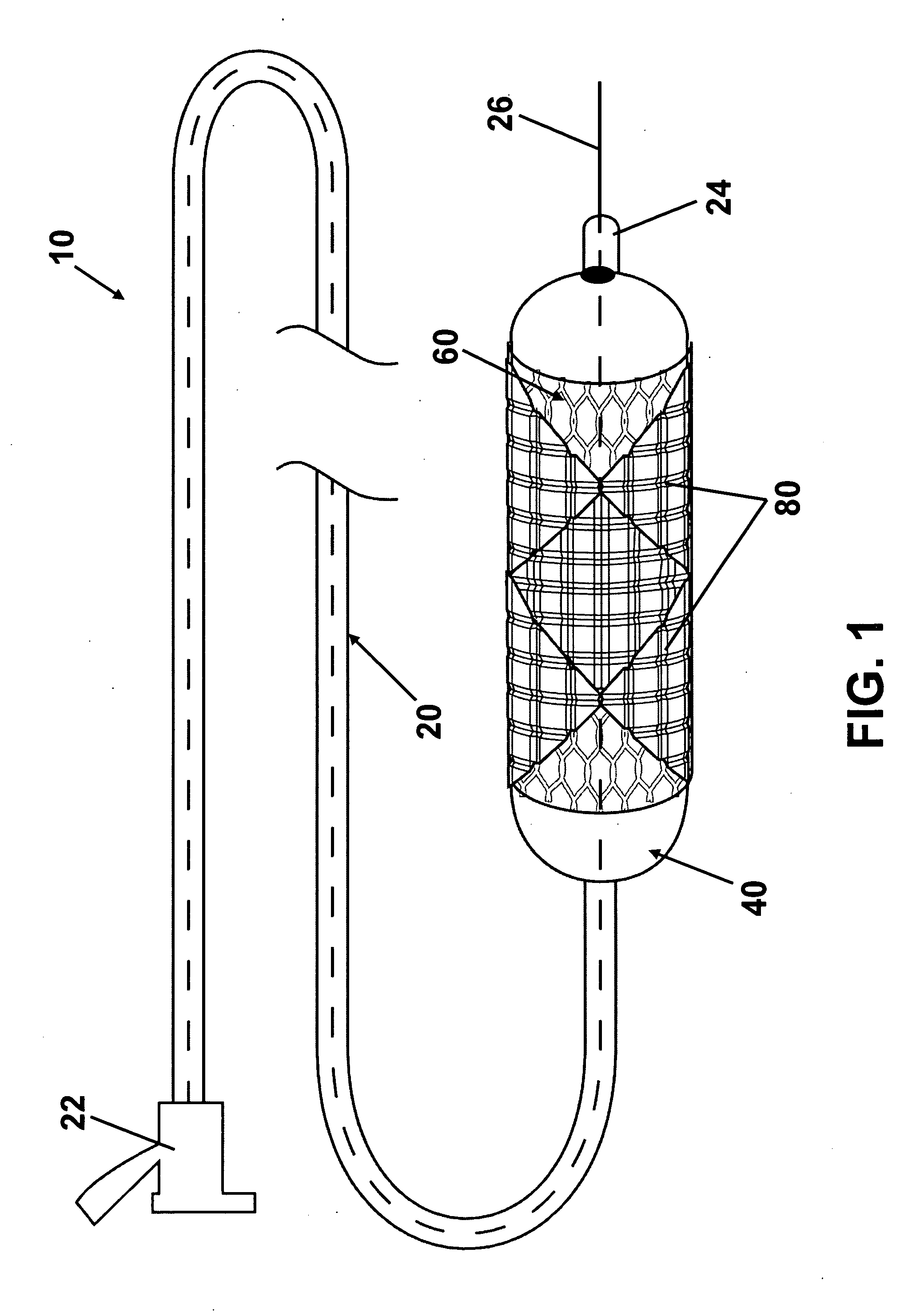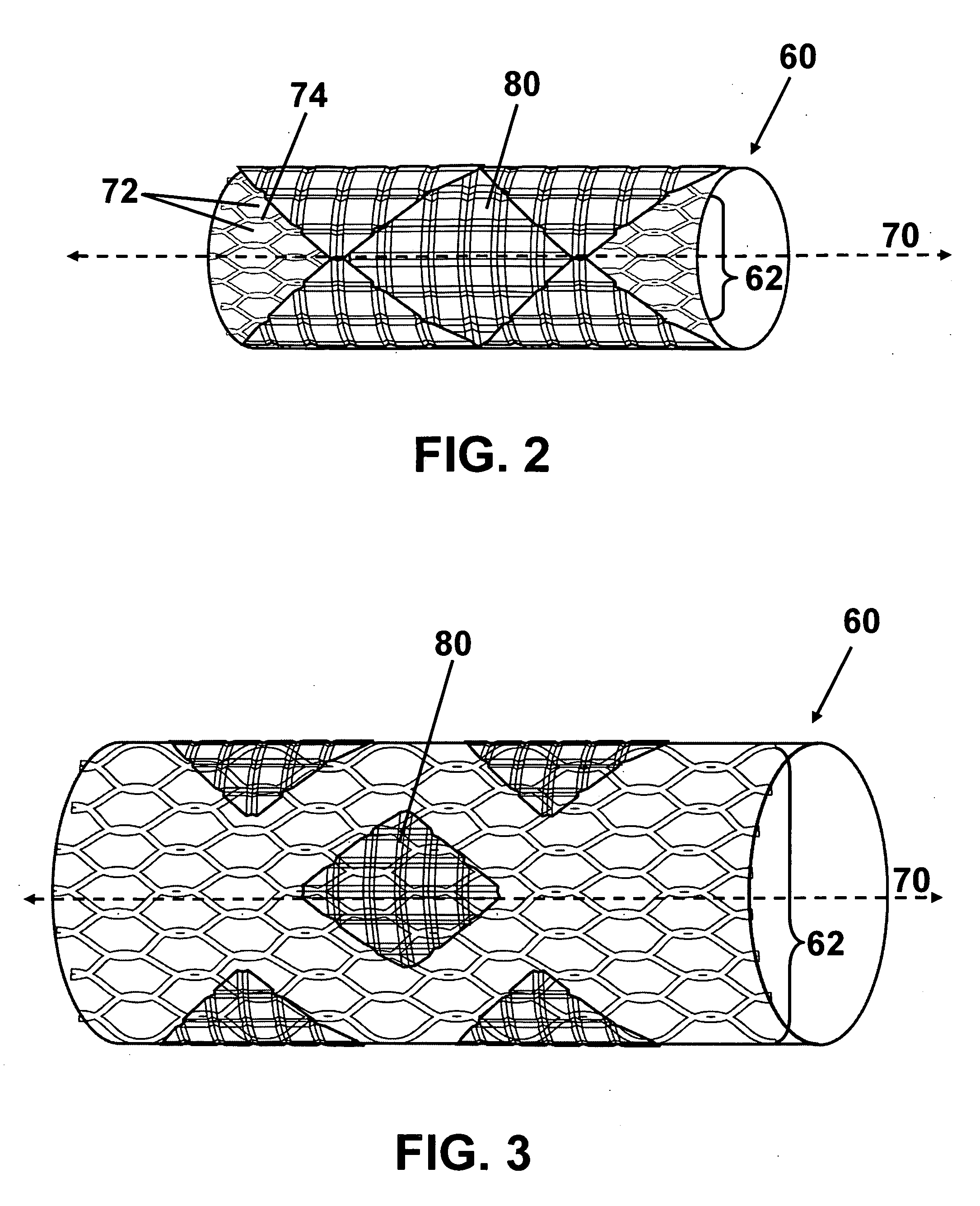Intraluminal stent including therapeutic agent delivery pads, and method of manufacturing the same
a technology of intraluminal stents and therapeutic agents, which is applied in the field of implantable medical devices, can solve the problems of restenosis, and re-narrowing of the vessel wall, and impose a significant force on the vessel wall, and the effect of trauma
- Summary
- Abstract
- Description
- Claims
- Application Information
AI Technical Summary
Benefits of technology
Problems solved by technology
Method used
Image
Examples
Embodiment Construction
[0020] Referring to the drawings, wherein like reference numerals refer to like elements, FIG. 1 is a perspective view of an intraluminal stent delivery system (not to scale) in accordance with one embodiment of the present invention and shown generally by numeral 10. System 10 includes a catheter 20, a balloon 40 operably attached to the catheter 20, and a stent 60 disposed on the balloon 40. Stent 60 includes a stent body 62, at least one pad 80, and at least one therapeutic agent (not shown) disposed on the pad 80.
[0021] Balloon 40, shown in a collapsed state, may be any variety of balloon capable of expanding stent 60. Balloon 40 may be manufactured from any sufficiently elastic material such as polyethylene, polyethylene terephthalate (PET), nylon, or the like. Stent 60, which is also shown in a collapsed state, may be expanded in sympathy with balloon 40. Stent 60 comprises a plurality of pads 80 including at least one therapeutic agent operably attached to body 62 of stent 6...
PUM
 Login to View More
Login to View More Abstract
Description
Claims
Application Information
 Login to View More
Login to View More - R&D
- Intellectual Property
- Life Sciences
- Materials
- Tech Scout
- Unparalleled Data Quality
- Higher Quality Content
- 60% Fewer Hallucinations
Browse by: Latest US Patents, China's latest patents, Technical Efficacy Thesaurus, Application Domain, Technology Topic, Popular Technical Reports.
© 2025 PatSnap. All rights reserved.Legal|Privacy policy|Modern Slavery Act Transparency Statement|Sitemap|About US| Contact US: help@patsnap.com



